Key takeaways:
- Selective mutism is a complex anxiety disorder primarily affecting children’s ability to speak in social situations, often linked to shyness and social anxiety.
- Awareness and education about selective mutism are critical for fostering supportive environments and improving treatment options for affected children.
- Effective treatments often involve a combination of approaches, such as cognitive-behavioral therapy, exposure therapy, and parental involvement.
- Future treatments may leverage technology, such as teletherapy, and emphasize interdisciplinary collaboration among professionals for holistic support.
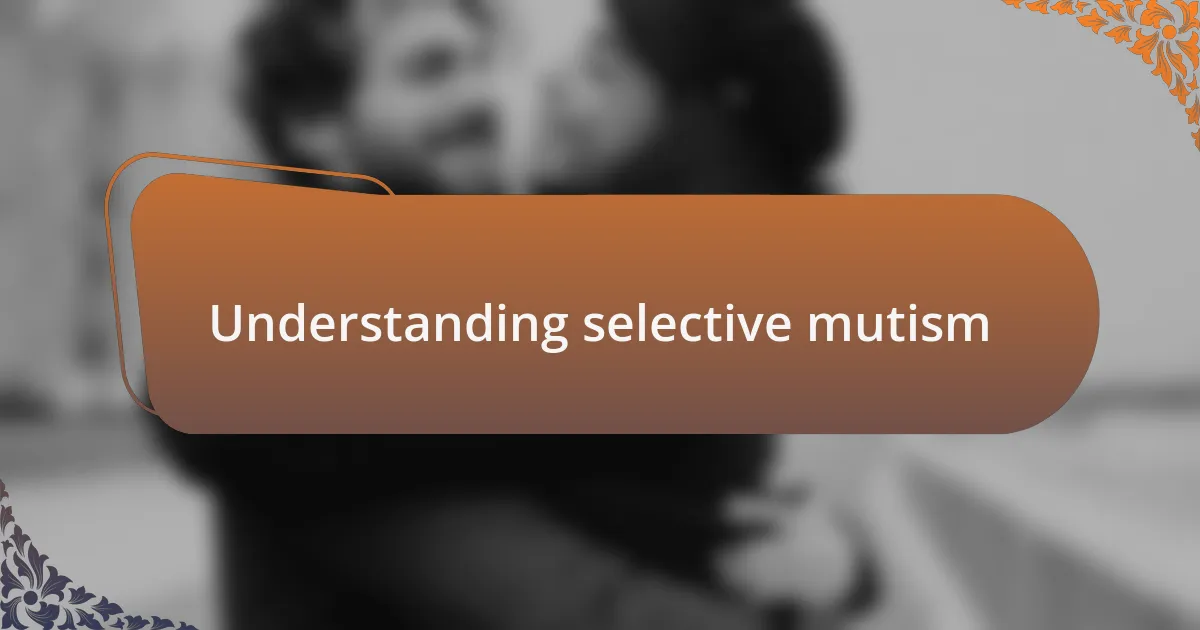
Understanding selective mutism
Selective mutism is a complex anxiety disorder often emerging in childhood, characterized by an inability to speak in certain social situations, despite having the capacity to speak in others, like at home. I remember a close friend’s child who would chat endlessly with family but would freeze in social settings, almost as if a switch was turned off. It’s heartbreaking to see a child so capable yet unable to express themselves in environments that should feel safe.
The reasons behind selective mutism can be multifaceted, often rooted in shyness, social anxiety, or even previous traumatic experiences. Have you ever noticed how silence can feel loud? For some children, the pressure of speaking feels overwhelming, leading them to retreat into silence instead of sharing their thoughts. From my experience, understanding this can help parents and caregivers approach the child with patience and empathy.
Intervention strategies, like gradual exposure to speaking scenarios, can prove beneficial. There’s no one-size-fits-all solution; what works for one child might not work for another. It’s essential to create supportive environments where communication is encouraged without judgment or pressure. Reflecting on this, I find that fostering a connection through shared interests often brings these children out of their shells, allowing their voices to emerge in their own time.

Importance of selective mutism awareness
Awareness of selective mutism is vital because it sheds light on the unique struggles individuals face daily. I’ve witnessed the frustration of parents not understanding why their child won’t speak in certain settings. This lack of understanding can lead to feelings of isolation for both the child and the family, making it essential for communities to recognize and empathize with this behavior.
Educating those around affected children can foster an environment of support and acceptance. Imagine being surrounded by peers who don’t understand why you’re not talking—it can amplify feelings of anxiety. I recall a situation where a parent explained their child’s selective mutism to classmates, resulting in a culture of kindness and patience that encouraged the child to feel safer in expressing themselves.
Moreover, raising awareness about selective mutism can lead to better treatment options and resources. I’ve seen families thrive when they connect with communities that provide shared experiences and strategies. How powerful would it be to know that others truly understand your journey? This shared awareness can drive advocacy and create networks of support, ultimately improving the lives of those impacted by selective mutism.
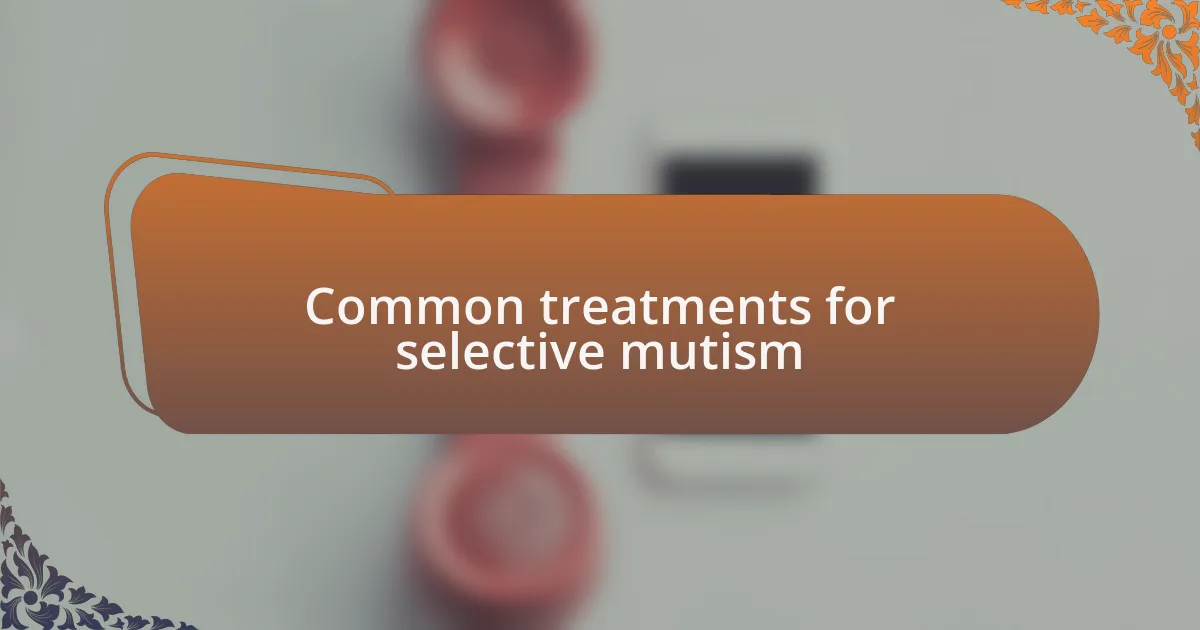
Common treatments for selective mutism
Common treatments for selective mutism often focus on gradually increasing a child’s comfort in social settings. One method I find particularly effective is cognitive-behavioral therapy (CBT). Through CBT, children can learn to cope with anxiety and develop communication skills in a supportive environment. I remember a family whose child, after just a few sessions, started to whisper responses in therapy—such small steps can be incredibly moving.
Another approach is exposure therapy, which encourages children to engage in speaking situations at their own pace. I’ve seen children thrive when they’re gently introduced to speaking in a safe environment, perhaps starting with role-playing at home. It’s a powerful reminder of how patience and understanding can create a nurturing atmosphere for growth. Have you ever watched someone bloom when given the right support? It can be truly inspiring.
Additionally, supportive techniques like parents modeling conversations or using social stories can play a significant role. I’ve often advised parents to create simple narratives that include their child’s experiences. This method not only normalizes their feelings but also provides a fun way to practice communication in a relatable context. By fostering a supportive narrative, we help bridge the gap between silence and voice, making those moments of connection incredibly meaningful.
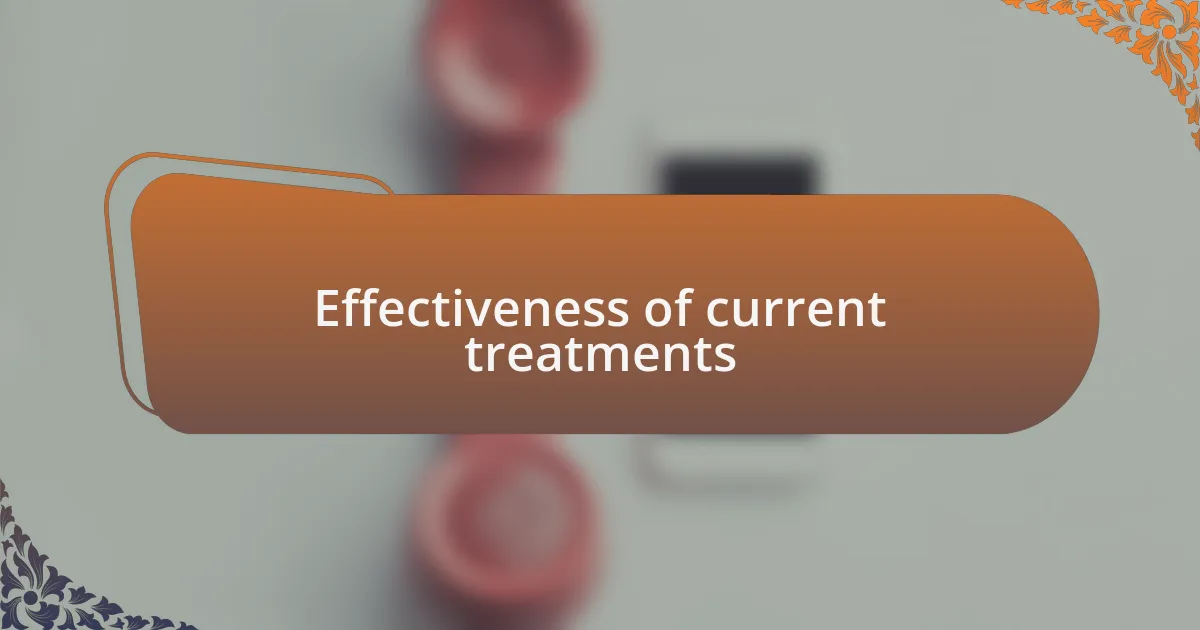
Effectiveness of current treatments
The effectiveness of current treatments for selective mutism can vary significantly. In my experience, I’ve noticed that a combination of approaches often yields the best results. For example, when a child participates in therapy that includes gradual exposure to speaking, I’ve seen them transform from hesitant to confident communicators—it’s a journey that highlights the importance of tailored strategies for each child.
One powerful technique I’ve encountered is the use of group therapy sessions, where children interact with peers who experience similar challenges. Watching them support each other in these safe spaces is heartwarming; they often feel less isolated. Have you ever felt the strength of shared experiences? That connection can be a catalyst for change, fostering not just communication but genuine friendships.
Interestingly, I remember a particular case where a child thrived after integrating breathing exercises into their routine. These simple practices not only helped reduce anxiety but also empowered the child in social situations. The improvement was striking—seeing them approach peers with newfound ease was a testament to how holistic treatment can enhance emotional resilience alongside communication skills. Isn’t it insightful how small changes can lead to bigger breakthroughs?
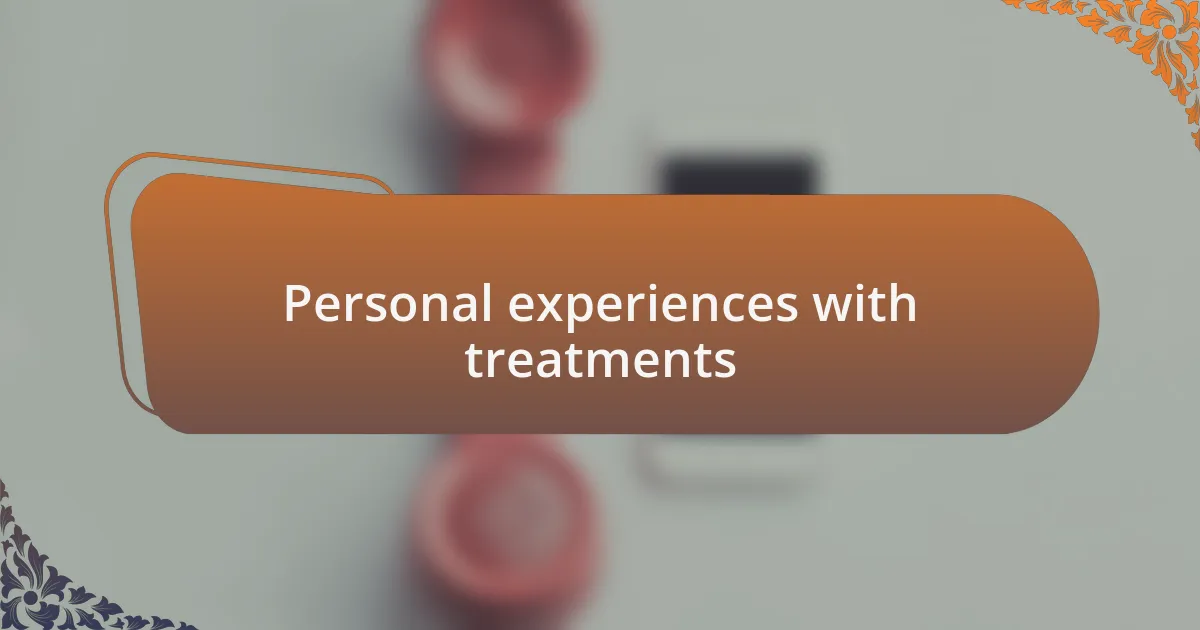
Personal experiences with treatments
I vividly recall a moment when a child I worked with began using a communication notebook in therapy. Initially hesitant to speak verbally, she found comfort in writing down her thoughts and feelings. It was like watching a flower bloom slowly—gradually, she started to share her written notes aloud, showcasing how alternative methods can bridge the gap when traditional approaches feel overwhelming.
Then there was the young boy who resisted group activities at first. However, through consistent encouragement and some engaging role-playing games, I witnessed him slowly come out of his shell. One day, he volunteered to lead a skit, and the joy etched on his face was priceless. This experience solidified my belief that creating a fun, low-pressure environment can ignite a child’s willingness to communicate.
Reflecting on these experiences, I’ve often wondered how essential it is to adapt treatments to individual needs. Each child is unique, and what works beautifully for one might not resonate with another. The diversity in approaches is fascinating—when I think about the variety of techniques available, I feel a sense of hope for every child struggling with selective mutism.
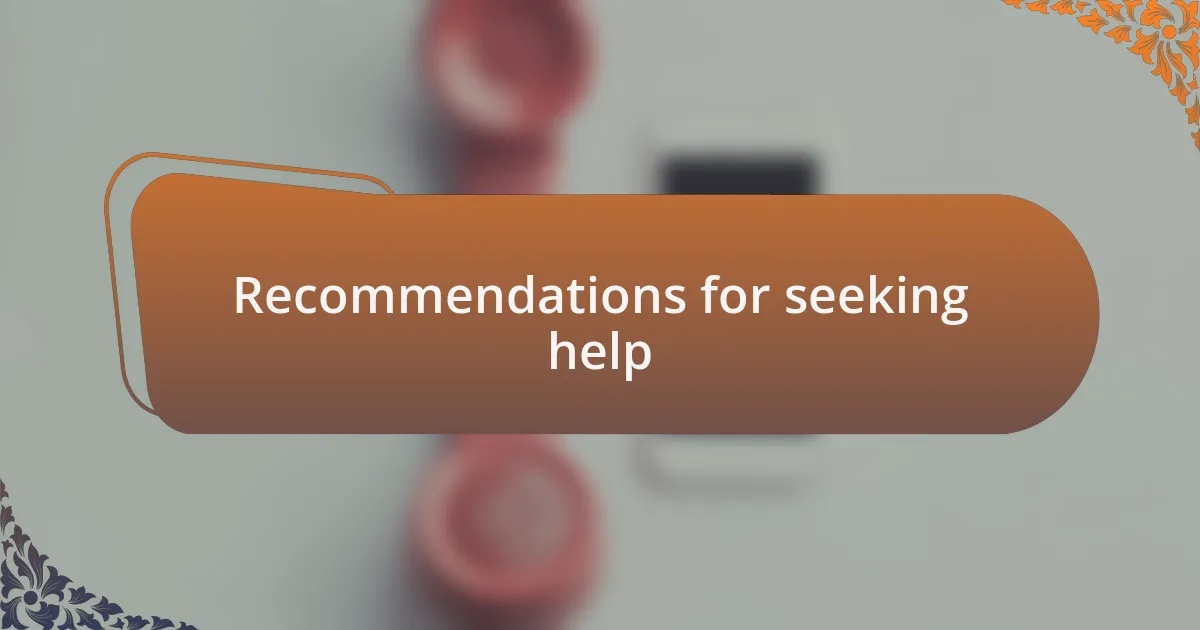
Recommendations for seeking help
When considering help for selective mutism, I often recommend starting with a professional who specializes in child psychology or speech therapy. It’s crucial to find someone who understands the complexities of this condition—someone who can tailor their approach based on individual needs. Have you ever felt overwhelmed by choices? I know I have. The right expert can help you navigate through those options.
One approach I’ve found helpful is involving parents in the therapy process. In my experience, when parents are educated about selective mutism, they often become the strongest advocates for their child. I once saw a mother who actively practiced techniques from therapy at home, creating a safe space for her daughter to express herself. She took it seriously, and the progress was remarkable. It made me realize how vital family support is in overcoming communication barriers.
Additionally, support groups can be invaluable. I remember attending a meeting where parents shared their stories and strategies, and it felt like a weight lifted off everyone’s shoulders. It’s comforting to connect with others facing similar challenges. Have you considered joining one? The camaraderie can make a significant difference, reassuring parents that they are not alone on this journey.

Future directions in treatment approaches
Innovative treatments for selective mutism are on the horizon, particularly with the emergence of technology-based solutions. I recently explored teletherapy options and found them to be quite promising. Imagine a child engaging in guided sessions from the comfort of their home, which can reduce anxiety and foster a connection in a less intimidating environment. It left me wondering how this approach might change the landscape for kids who feel overwhelmed by traditional settings.
There’s also a growing interest in utilizing cognitive-behavioral techniques alongside exposure therapy. I’ve seen firsthand how integrating gradual exposure can help children build confidence in social situations. For example, I once observed a young boy who initially struggled to speak in front of his peers, but through a playful approach of role-playing and incremental challenges, he eventually felt more at ease. Isn’t it inspiring how tailored methods can lead to such empowering transformations?
Lastly, interdisciplinary collaborations between psychologists, speech therapists, and educators are gaining traction. In my view, when these professionals work together, they create a holistic support system that can address the multifaceted nature of selective mutism. I often think about the potential impact of this team approach and wonder if it could lead to a more seamless experience for families seeking help. The synergy between different specialties could unlock doors previously closed, offering a comprehensive roadmap toward effective treatment.